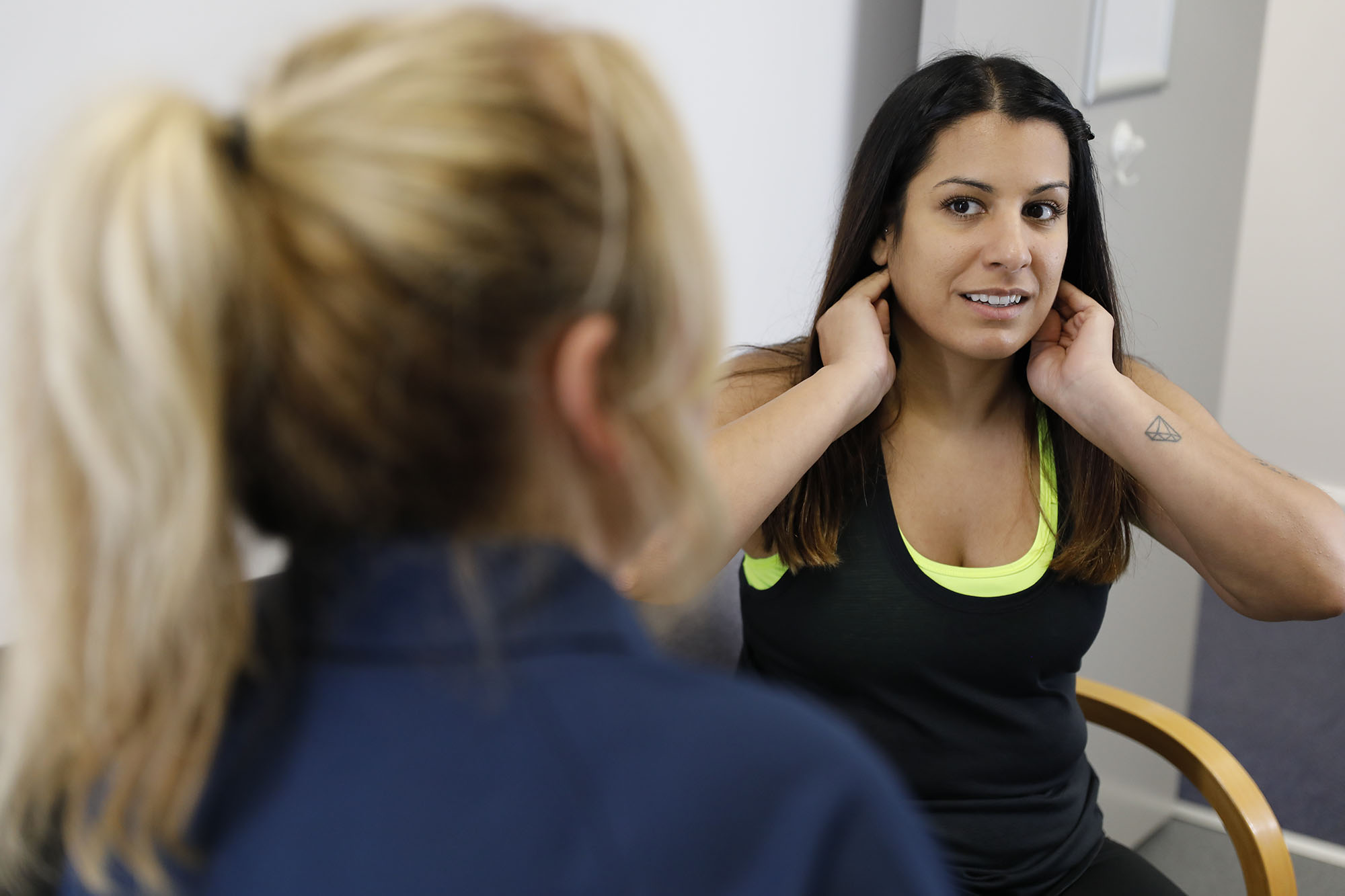The Neck Series: Part One Considering “Other” Factors in Neck Pain

In a recent conversation, I was discussing the role of the physiotherapist in treating or rather, importantly in this context, supporting self-management of neck pain.
Neck pain, without radicular symptoms or Red Flags, can seem very challenging to “treat” if the patient has great range of motion. It is the default for most practitioners to link a pain response in the neck with a loss of rotation.
But what happens if the movement is great and the range seems “normal”? What do you “modify”?
As MSK practitioners, we might need to ask ourselves: how good am I at understanding the link between mood and neck pain, between anxiety and muscular responses, and subsequent pain experiences and stress management (Kazeminasab et al 2022).
It might be that there is room for improvement in:
- How I understand potential correlation in the patient history
- How I create a narrative that the patient can relate to and that makes plausible sense
- Why hands on is very unlikely to create improvement
- How I can construct a programme that helps with any of those factors
- How I will know what has changed
- What is non-modifiable, but needs to be explored and expressed
- The techniques and advice around these elements.
It might be that further examination reveals poor proprioception, endurance, and balance (Hsu et al 2020, Peng et al 2021). This can be a way of providing insight into some consequence of neck pain, but it may not be causative.
The multi-factorial nature of neck pain is challenging and requires psychological insight, understanding and explanation – it was so much easier when it was just range of motion!
Bringing this together means that we may not know which factors are causative and which are consequential.
So, what do we do?
Sometimes reasoning through treatment, and accepting that the complexity does not allow for explanation, whilst also sensibly modelling addressing these factors as a start is key.
For many practitioners who want to “treat”, this feels counter intuitive. In terms of self-management, backing up a plausible explanation with lifestyle changes allows for the patient to “experience” the relationship, and as the model of self-efficacy in neck pain is required for such a potential long-term problem, this is vital for success.
When the neck moves well, the “other” factors are always in play, and learning more about this may make care a little easier to deliver.
References
Hsu, W.L., Chen, C.P., Nikkhoo, M., Lin, C.F., Ching, C.T.S., Niu, C.C. and Cheng, C.H., 2020. Fatigue changes neck muscle control and deteriorates postural stability during arm movement perturbations in patients with chronic neck pain. The spine journal, 20(4), pp.530-537.
Kazeminasab, S., Nejadghaderi, S.A., Amiri, P., Pourfathi, H., Araj-Khodaei, M., Sullman, M.J., Kolahi, A.A. and Safiri, S., 2022. Neck pain: global epidemiology, trends and risk factors. BMC musculoskeletal disorders, 23(1), pp.1-13.
Peng, B., Yang, L., Li, Y., Liu, T. and Liu, Y., 2021. Cervical proprioception impairment in neck pain-pathophysiology, clinical evaluation, and management: a narrative review. Pain and Therapy, 10, pp.143-164.